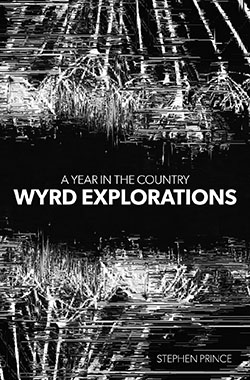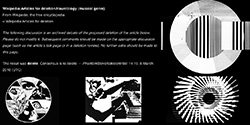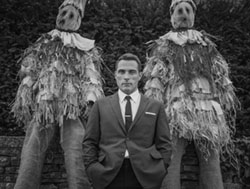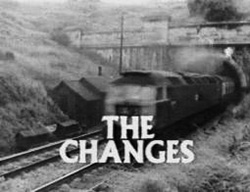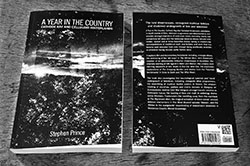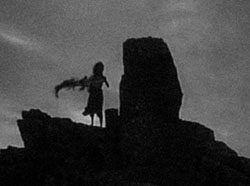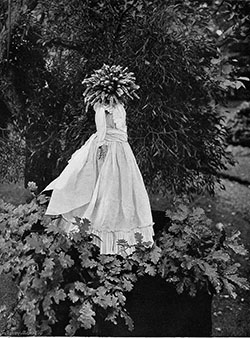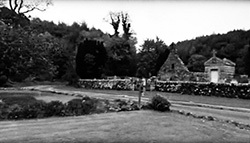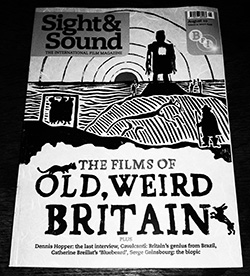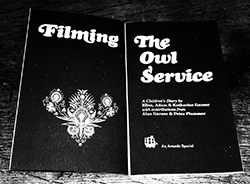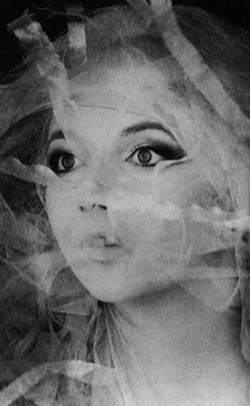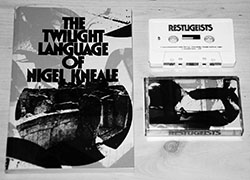
Hot Fuzz (2007) is a British-made buddy cop action comedy film, directed by Edgar Wright and co-written by him and its lead actor Simon Pegg, which centres around and depicts an idyllic rural village that has in large part gone rogue and become rotten and corrupt.
In the film, over-achieving London police officer Nicholas Angel, who takes his work very seriously, is relocated to Sandford; a place which initially appears to be a typical sleepy quaint British village. However, things are not as they seem, and Angel and his colleagues are soon embroiled in a murderous conspiracy by prominent members of the village who are intent that, no matter what, Sandford will continue to win the area’s Village of the Year competition: cue fellow villagers and visitors who may get in the way of this being sent to their demise via the likes of large-scale explosions, tumbling masonry and decapitation in a car accident. Notably these murders are often instigated due to relatively minor infractions that are considered by the conspirators to impinge on the village’s bucolic “ye-olde worlde” view of itself, such as a metallic painted “living statue” mime street artist who when found by Angel is comically still holding his mime pose despite being deceased.
Angel is shown as being somewhat out of place in supposedly sleepy Sandford, after the hustle and grittier experiences of city policing, something which is heightened by his wearing of modern protective police wear and equipment despite the seeming unlikeliness of his needing to use it in the general peace and calm of his new surroundings. This is also in contrast to his new police duty partner Danny Butterworth, played by Simon Pegg’s frequent collaborator Nick Frost, who at least until the later action sequences, is more likely to be seen wearing a woollen policeman’s jumper and in both character and appearance is nearer to the idealised image of the classic friendly British country policeman.
Butterworth is portrayed as a sweet, gentle, good-hearted soul, but also as somebody who, in a similar manner to the film itself, is in thrall to American buddy cop action films and their notions of the excitement and glamour of the shoot-out, the chase etc, and so he is more than slightly in awe of this “big city” newcomer and his metropolitan experiences.
Edgar Wright has said that he wanted to make a cop action film because unlike much of the rest of the world at the time, Britain did not have a strong tradition of such cinema – although, to a degree, it did on television via the likes of the gritty police drama The Sweeney (1975-1978). Indeed, with regard to this, in Hot Fuzz two of the police detectives, both of whom happen to be called Andy Wainwright, seem to be channelling characters from a previous decade’s television, in terms of their belligerent swaggering attitude, moustaches and vaguely period clothing – possibly the aforementioned The Sweeney or perhaps the 1980s-set, police timeslip series Ashes to Ashes (2008-2010).
There have, of course, been a long line of American buddy cop action films including Point Break (1991), Bad Boys (1995) and the Lethal Weapon series of films released between 1987 and 1998 etc, and as with many such films, at the heart of Hot Fuzz is the relationship between the contrasting characters of two “buddy” police officers, Angel and Butterworth.
Hot Fuzz transfers Hollywood action and cop movie aesthetics to a British rural setting (Wright has said that he originally pitched Hot Fuzz with the title Rural Weapon) and makes direct and indirect references to such American films – in particular Point Break and Bad Boys – in an often-humorous manner. However, Hot Fuzz is not so much a parody, spoof or satire of them but rather an affectionate homage which seems to hold its source material in high esteem. However, despite the relatively high production values, special effects and so forth, in some indefinable manner Hot Fuzz retains a sense of being British drama; there is a subtle and appealing characteristic awkwardness to some of the action scenes etc that seems to reflect a national film industry that has never fully embraced the flash and spectacle of Hollywood-style cinema.
Connected to which there is a curious disconnect when watching an, at times, all out action film of this type set in a British village and its local supermarket etc, and on seeing Hollywood- style action, heroics and gunplay undertaken by British policemen. And so, much of the film’s humour and character is derived from the appearance and use of the trappings of American cinema’s action cop films, such as chases, fight scenes, automatic weapons and explosions etc, in the unexpected setting of a rural British village.
Alongside referencing American buddy cop action films, Hot Fuzz also makes a more than cursory nod towards other genres, including Westerns (towards the end of the film Angel is shown armed and riding into town on a horse in a manner redolent of the avenging hero in a Western); previous British horror and folk horror films, in particular The Wicker Man (1973), The Omen (1976) and gothic Hammer Horror; and even “giant monsters on the rampage in the city” films such as the numerous versions of Godzilla.
With regard to Hot Fuzz’s relationship to The Wicker Man, in both films a priggish outsider policeman attempts to solve a mystery in a rural community where something untoward may be afoot, and is led a merry dance by its inhabitants. This connection is made all the more implicit by the presence of Edward Woodward in Hot Fuzz, in what was to be his penultimate cinema role.
Woodward’s role in The Wicker Man, of a police sergeant investigating the rural folk as a representative of the law of the land and (to his mind) societal decency, is stood on its head in Hot Fuzz as he is involved in the village’s murderous conspiracy and is eventually shown as the last living rogue villager, when near the film’s end he bursts into the police station and attempts to shoot Angel. He is foiled but accidentally activates a sea mine that Angel had earlier confiscated as part of an arms cache, from another local. Woodward’s character is ultimately killed and the station is destroyed in a manner that seems to bring to an end, and close the circle of, a story cycle in British cinema.
The film’s nods towards 1970s British horror cinema – in particular that era’s portmanteau films and preoccupations with witchcraft and the occult – can be seen in the fact that the murderous conspiracy is shown to be the result of the actions of an essentially morally corrupt and very misguided local community group, the Neighbourhood Watch Alliance or NWA (an acronym which is a humorous and incongruous reference to the notorious American gangster rap group). When Angel visits a secret NWA meeting, rather than finding them to be a conventional local community group, they are presented as nearer to a coven or cult who choose to gather at night in black shawls and hoods around a stone table in a castle. However, they still retain a curious, friendly neighbourhood committee air as they discuss their dastardly deeds and this unlikely juxtaposition is mined for comic effect.
In a further connection to 1970s horror, the murder, with the use of falling church masonry, of a journalist who is planning on revealing information about goings-on in the village appears to be a direct reference to The Omen, in which a priest who is similarly attempting to reveal secrets is killed by a lightning rod falling from a church roof during a storm. Alongside which, Hot Fuzz’s references to Hammer Horror-esque gothic films, in particular, can be seen in the scene in which Angel flees the NWA and falls into a catacomb filled with the bones and remains of those they have killed.
At the above-mentioned NWA meeting, the head of the local police, Inspector Frank Butterman (played by Jim Broadbent) who is also Danny’s father, is revealed as being one of the instigators of the conspiracy the roots and aims of which turn out to be a thoroughly misguided attempt to honour his wife’s memory and her wish for Sandford to keep the Village of the Year title. Meanwhile in comparison to that of Nicholas Angel, Inspector Butterman’s uniform appears to be suggestive of an earlier era of policing and this subtly unsettles expectations and norms as, in a rural setting, this serves to summon up an avuncular sense of the “good old British bobby”1 and with it a bygone gentler way of life.
As with The Wicker Man, Hot Fuzz flips the chocolate box idyll of the British village and rural communities and presents them as the “unknown” or “other”; a threatening and deceitful group closed and separate to the outsider or city dweller, with ways, morals and motivations that appear foreign and at a far remove from mainstream and urban society’s mores.
Hot Fuzz’s reversing of expectations and settings is further heightened when in a climactic scene Angel pursues and fights another of the conspiracy’s prime instigators, local supermarket manager Simon Skinner, played by former James Bond Timothy Dalton, who is the film’s resident arrogant bad guy.
This scene takes part within a conspicuous symbol of gentle Britishness, a miniature model village complete with “Please Keep Off The Grass” signs, with Angel and Skinner towering over the buildings and is nearer at points to the kind of giant battling monsters that might be found in science fiction and fantasy films. As with similar sequences in such films, their fight leads to the literal destruction of whole structures, although here they are the small-scale replicas of the components of a typical rural village rather than city skyscrapers.
After his first defeat and mirroring many such multiple returns of the bad guy in American genre film, Skinner rises back up and attempts to attack Angel, albeit with a small plastic-handled box- cutting knife – presumably normally used in a day-to-day manner at the supermarket – rather than say a machete or similar weapon, that might be seen in its American cinematic equivalent. The use of this prosaic and relatively small weapon along with the general wrongness of a pitched violent battle in a model village further emphasise the comic out-of-place nature of such actions amongst a bucolic idyll.
At one point Skinner appears to be winning and shouts: “Get out of my village”, to which, before overwhelming his foe, Angel replies with extreme conviction “It’s not your village anymore”.
And ultimately the forces of corruption are vanquished, with Sandford being shown as returning to conventional societal norm and equilibrium.








